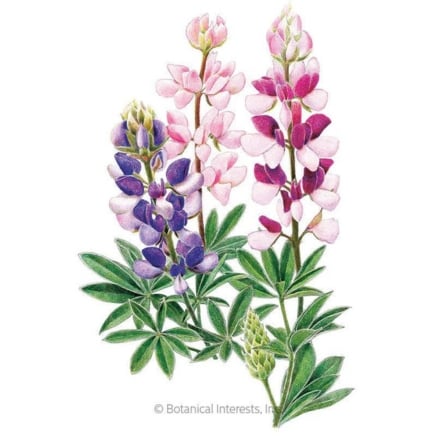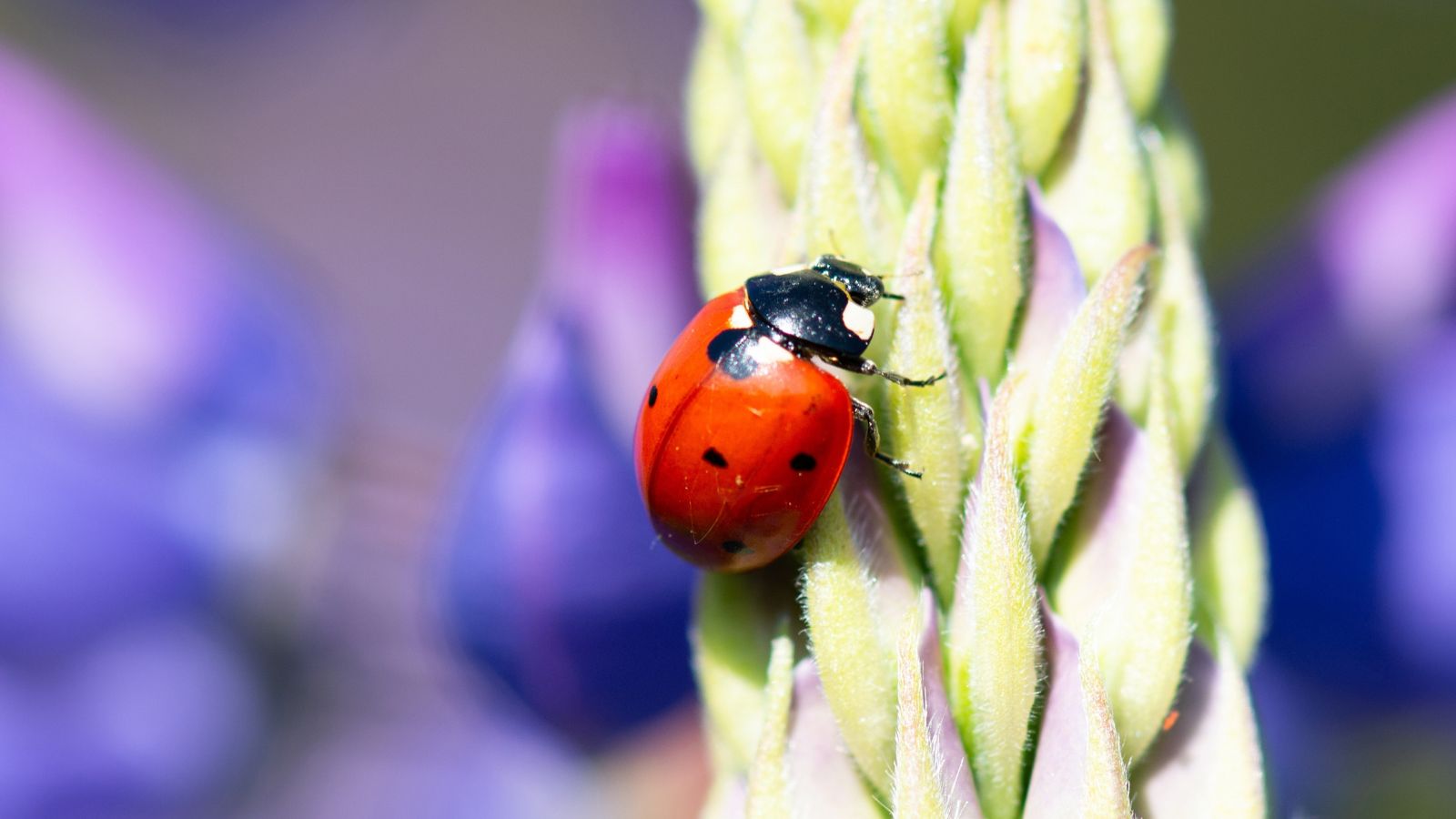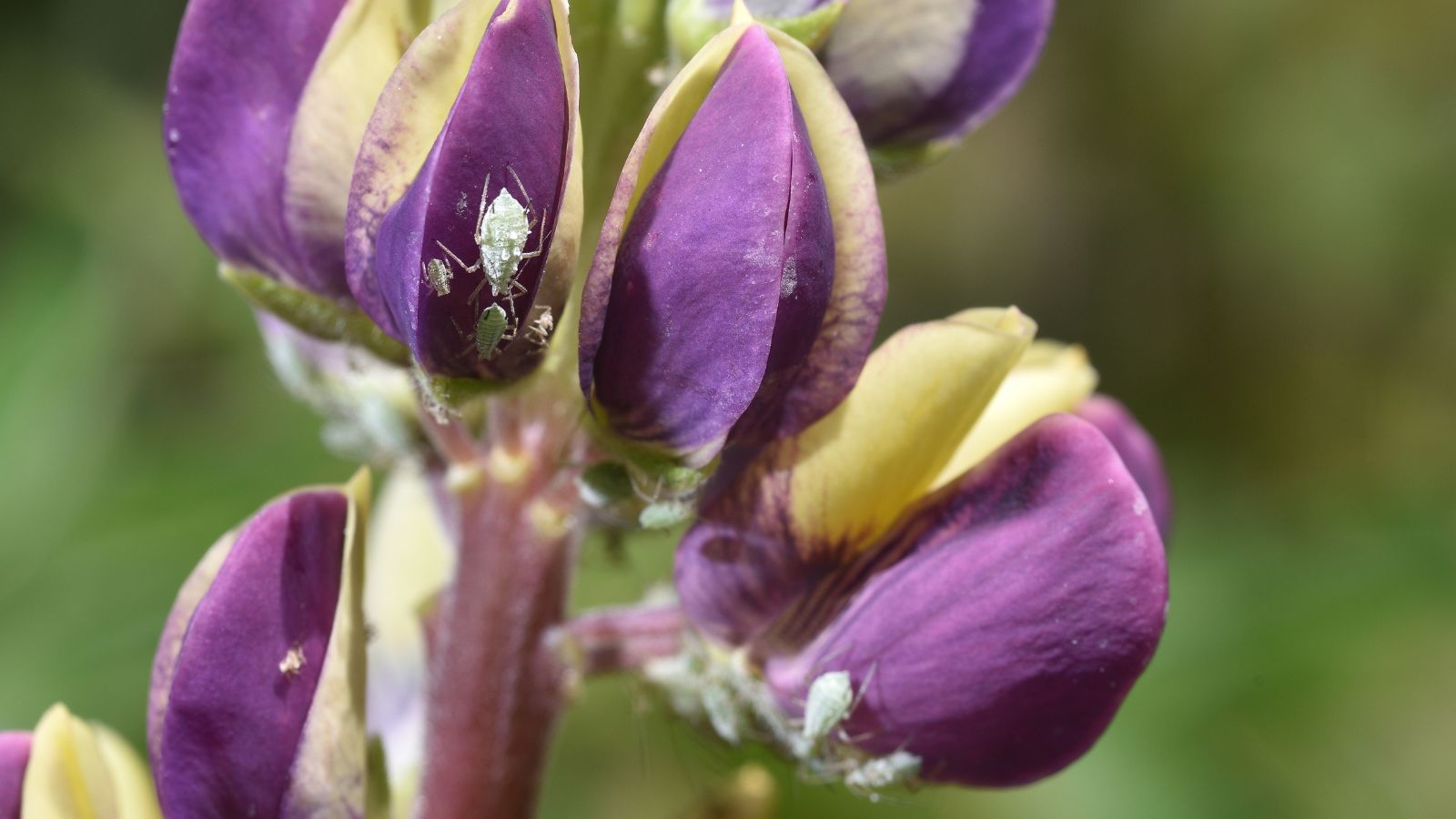PROTECT YOUR DNA WITH QUANTUM TECHNOLOGY
Orgo-Life the new way to the future Advertising by AdpathwayLupine plants’ tall flower spires brighten the garden with their colorful blooms. Whether you want to enjoy the flowers in a cottage garden or plant them for cutting, they’re showstoppers.
Unfortunately, these beautiful perennials aren’t immune to one of the most common garden pests: aphids. If you spot these tiny pear-shaped insects crawling on your lupine’s leaves or stems, don’t worry. Identifying and treating aphids shortly after they appear will keep your lupine plants healthy and blooming for days to come.
I’ll share how to scout your plants for aphids, when and how to control the pests, and how to prevent future outbreaks.
Sundial Lupine Bluebonnet

Sundial Lupine Bluebonnet Seeds

Russell Blend Lupine Seeds

Pixie Delight Lupine Seeds
Know What Aphids Look Like
 They are small and pear-shaped with antennae.
They are small and pear-shaped with antennae. If you’re a longtime gardener, you’re probably familiar with aphids. But if you’re unfamiliar with these pests, don’t worry!
Although aphids are small, they’re easy to identify. The adults range from one-eighth to one-quarter of an inch long and have pear-shaped bodies with pointed butts. Most aphids have long antennae on their heads and two pointed structures called cornicles protruding from their hind ends.
As aphids feed, they secrete a sugary substance called honeydew. Therefore, you may notice your plant coated in this sticky, shiny secretion.
Types of Lupine Aphids
 This species specifically attacks lupines.
This species specifically attacks lupines.Numerous types of aphids can attack these flowering perennials, but the lupin aphid (Macrosiphum albifrons) is one of the most notable species. This tiny, pear-shaped insect is light green and dusted in a white, waxy substance.
The lupin aphid is a specialist and only feeds on lupine plants. As it feeds on the plant’s sap, it absorbs chemical compounds that make it undesirable to common predatory insects like ladybugs.
Other aphid species can also attack lupines, but these pests may leave the plants to feed on other flowers and vegetable crops. Some species are green, and others appear in shades of red, yellow, and gray.
Regularly Scout for Pests
 They can be difficult to spot if you don’t regularly scout for symptoms.
They can be difficult to spot if you don’t regularly scout for symptoms.Aphids are small pests, so you won’t notice them if you stroll by your lupines without taking a close look. Couple their small size with their often invisible damage, and it makes sense that these pests are difficult to spot. The trouble is that large aphid populations are much more difficult to control than a dozen of the insects.
Regularly checking your lupine plants for aphids allows you to spot the pests early and take quick action.
How to Scout
 Look at the undersides of leaves, the base of the plant, and the stem.
Look at the undersides of leaves, the base of the plant, and the stem.Scouting involves regularly inspecting your plants for pests to determine what treatment, if any, is necessary. Set aside one day a week to carefully look at your lupine plant and check for aphids. Lift up the leaves, look at the stem, and inspect the base of the plant.
Note how many aphids you see since this will inform whether or not you need to take action. Are there just a few aphids or a couple of dozen? If you check your plants for pests weekly, you should avoid coming upon large aphid populations.
Encourage Natural Predators
 Beneficial predators like ladybugs feed on these pests.
Beneficial predators like ladybugs feed on these pests.Although we hate spotting aphids on our plants, some insects love them. Beneficial natural predators, including hoverflies, green lacewings, ladybugs, and parasitic wasps, feed on aphids. These predators often find and control aphid populations, protecting your lupine plants in the process.
While these good bugs are often naturally present in ecologically sound gardens, you can take a few steps to attract them and encourage them to stay.
First, avoid using broad-spectrum pesticides. These products don’t target individual species or genera of pests but rather affect every insect they come into contact with. Even if you may be targeting pests like cucumber beetles or harlequin bugs, you’ll also kill good bugs. Some examples of these non-differentiating insecticides include bifenthrin (Sevin) and spinosad.
You can help attract natural predators to your garden by planting a diversity of flowering plants. While the immature stages of these good bugs often feed on aphids, many adults prefer pollen and nectar. Small flowers like dill, sweet alyssum, and cilantro will provide food for the insects and encourage them to make your garden their home.
Add the Correct Nutrients
 Avoid applying too much nitrogen because this can increase the aphids’ attraction to plant sap.
Avoid applying too much nitrogen because this can increase the aphids’ attraction to plant sap.Aphids feed on plants by inserting their straw-like mouthparts in the plant and sucking its sap. Aphids particularly love sap that’s high in free amino acids and simple sugars. The pests are less likely to feed on plants that have complete proteins and complex carbohydrates in their sap.
Adding just the amount of nutrients plants need, no more and no less, will help the plants form these complex compounds. While there are lots of details we could get into, you may not be looking for a textbook on plant and soil biochemistry.
In simple terms, there are two items to keep in mind. First, avoid applying too much nitrogen fertilizer to your plants since this can cause a buildup of simple amino acids in the sap. Second, don’t forget to apply secondary and micronutrients, including magnesium, manganese, and boron. These trace elements play a key part in plant reactions like photosynthesis and protein synthesis.
Treat Early
If you spot aphids, don’t wait to treat them! Getting rid of a few pests is much easier than tackling an aphid-covered lupine plant. The best treatment method depends on the number of aphids and your personal preferences.
Squish or Remove the Pests
 Hand squishing is an easy method for small infestations.
Hand squishing is an easy method for small infestations.If you spot just a few aphids, you can pinch them between your fingers. Not everyone likes to feel the squish of bugs beneath their fingers, so wearing gloves can alleviate some of the ick. If you’re still not fond of the idea of squashing them, you can choose other methods.
Another option is to remove the infected portions of the plant. This isn’t feasible if your entire plant is infested, but it works well if the aphids are congregated on a single leaf or stem.
Spray With Soap
 Insecticidal or horticultural soap needs to be applied more than once.
Insecticidal or horticultural soap needs to be applied more than once.One easy and effective way to treat aphids involves spraying them with insecticidal soap. Ensure that all pests are thoroughly coated, as the soap must make contact for it to be effective.
If you have dozens or even hundreds of pests on your lupine, spraying them with insecticidal soap can still be effective. However, you may need to spray more than once to ensure you contact all the aphids. Spraying in the evening or on a cloudy day is ideal since it limits the chance of sunburn.
Spray With Neem Oil
 This natural spray suffocates the pests.
This natural spray suffocates the pests.Neem oil is an organic insecticide made from the seeds of the neem tree. It affects aphids in multiple ways, including suffocating them and disrupting their feeding.
If you choose to use neem oil, dilute it appropriately and then spray it on your aphid-infested plant. Avoid spraying before a heavy rain event and on bright, sunny days. Always use insecticides outside the times of peak pollinator activity. Spray a light mist in the early morning before the bees and butterflies are out.


 2 weeks ago
12
2 weeks ago
12





















 English (US) ·
English (US) ·  French (CA) ·
French (CA) ·